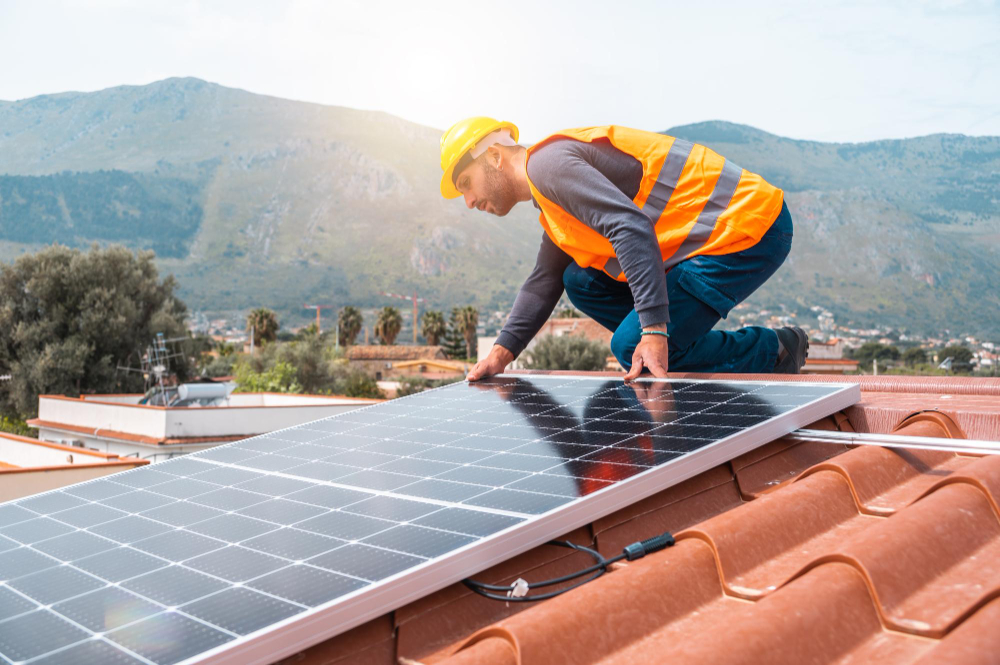If you are looking for a cost-effective and dependable energy source for your home or business, solar energy is an excellent option to consider. Thanks to technological advancements and growing attention to environmentally friendly and sustainable energy, renewable energy solutions like solar panels are gaining popularity.
They are fast becoming a common sight worldwide — you can find them sitting pretty on rooftops and open fields, converting sunlight into electricity. Not to bore you with the science behind solar energy conversion and all the scientific jargon, this article will explain, in simple terms, the three types of solar panel mounts and point you in the direction of the best one for your needs at Solar Fasten.
Before we dive deeper, it is worth mentioning that the efficiency and longevity of your solar panel system are just as dependent on “how they are mounted” as the panels themselves. If you can mount your solar panel correctly, you will have succeeded in maximising energy production, ensuring the durability and aesthetics of the installation.
Here are the three types of solar panel mounts out there — they should help you decide which one is best for you.
Roof-mounted Solar Racks
Contrary to popular misconceptions, roof-mounted solar racks are perfect for both residential and commercial use. They are designed to be attached directly to your roof’s surface (be it asphalt shingles, tiles, metals, or other roofing materials). These types of mounts come in two major configurations — Flush mounts and Tilted mounts.
Let’s take a closer look and see how they both work.
Flush Mounts
Also known as “low-profile mounts”, flush mounts are attached directly to the roof surface — making them less obvious/discreet and aesthetically pleasing. They are also ideal for people living in areas with minimal snowfall and strong winds. Why?
That’s because they offer little resistance to such elements.
Tilted mounts
Just as the name suggests, this mounting system involves installing or placing the solar panels at an angle. This is primarily done to optimise solar exposure and ensure more sunlight is captured throughout the day. Thanks to their thoughtful design, one can get the optimal tilt angle ideal for their location and season. While some folks would argue that they are slightly more visible than their flush counterpart, the improved energy generation more than compensate for the concerns about their aesthetics.
Ground Mounted Racks
If you are thinking of “larger installations” where you have plenty of space to spare, ground-mounted arrays are the best option for you. Interestingly, these mounts are versatile and can be installed in different environments — open fields, unused land, and even in gardens. In addition to their versatility, ground-mounted racks offer several other benefits.
Let’s take a look at some of them:
Optimal sun exposure
They can be positioned to face the sun directly throughout the day. As such, maximising energy production.
Minimal impact
Unlike their counterpart, ground mounted doesn’t impact the structural integrity of your roof, and with proper planning, they can be positioned to have much less visual impact on your property. Next, they are easy to maintain, and they feature adjustable tilt.
Regarding maintenance, cleaning and maintaining ground-mounted solar panels is much easier to handle than roof-mounted panels. Not to mention the risks of cleaning at a height. Then there is adjustable tilt. Like tilted roof mounts, ground-mounted panels can also be adjusted to achieve optimal tilt angles.
3. Pole-Mounted Solar Arrays
These are often considered or best described as a subtype of ground-mounted systems. However, in this instance, the solar panels are mounted on poles or other similar structures. They are ideal for use in residential areas without suitable open space or roof. Because of their unique design, they equally offer some mind-blowing benefits.
Here are some of them:
Height advantage
Because they are mounted on poles or an elevated structure, they can easily avoid obstructions and increase sun exposure.
Flexibility
Because of their high flexibility, they can positioned to capture enough sunlight even if your property has shading issues. In addition to space efficiency, they can be engineered to withstand beating from the elements like winds. As such, it provides added protection to your solar investment.
What Factors Affect the Choice Of Solar Panel Mounts?
When choosing the right mount system for your needs, there are important factors you should have at the back of your mind. To help you make a well-confirmed decision, we have researched and compiled a list of top factors you should consider adding to your checklist.
Here you go.
Location
Top on the list is location.
Your choice of mounts depends on the characteristics of your property. While roof-mounted systems perform best in areas with limited space, ground-mounted systems and pole mounts are ideal for open areas.
Aesthetics
While functionality and performance often take the lead when planning a solar installation, some folks are very much concerned about aesthetics.
For such individuals or businesses, flush mounts or certain variants of ground-mounted racks will do just fine.
Budget
As you can imagine, different mounts have varying costs — because of the materials involved, method of installation, and engineering. To be safe and avoid unpleasant financial surprises, it is always best to consult with a professional, research, and weigh your options before taking on solar installation projects.
Last but not least, sun exposure. You have to consider the sun’s path and potential shading challenges that could hinder the performance of your solar panels.
NB: The idea is to choose the mount that offers the best sun exposure.
To ensure that you are going about things the right way and you get to enjoy maximum return on your investments, you should consult solar professionals who can perform site assessments and give you expert advice and recommendations.












